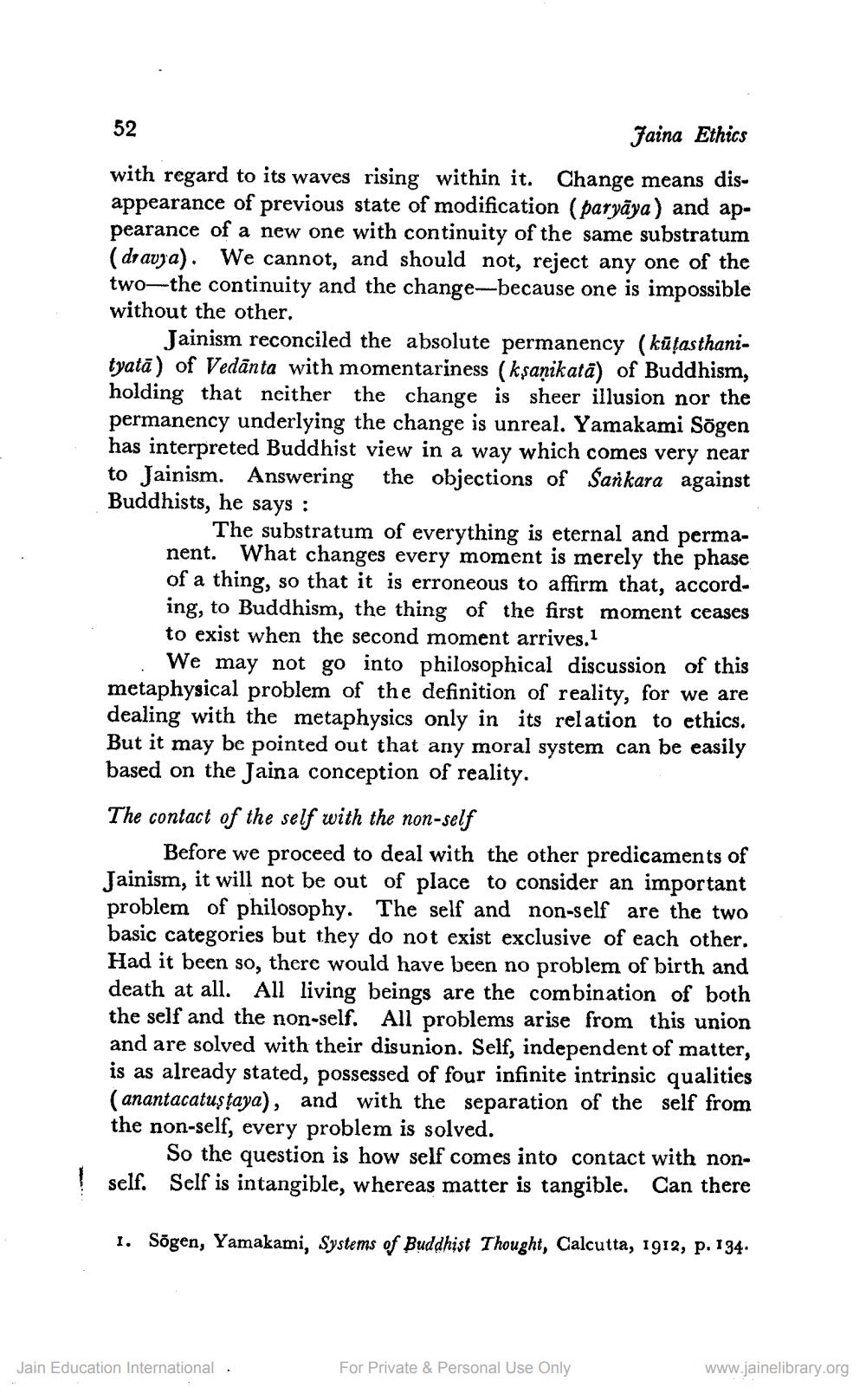________________
52
Faina Ethics
with regard to its waves rising within it. Change means disappearance of previous state of modification (paryaya) and appearance of a new one with continuity of the same substratum (dravja). We cannot, and should not, reject any one of the two-the continuity and the change-because one is impossible without the other.
Jainism reconciled the absolute permanency (kūṭasthanityata) of Vedanta with momentariness (kṣaṇikatā) of Buddhism, holding that neither the change is sheer illusion nor the permanency underlying the change is unreal. Yamakami Sōgen has interpreted Buddhist view in a way which comes very near to Jainism. Answering the objections of Sankara against Buddhists, he says:
The substratum of everything is eternal and permanent. What changes every moment is merely the phase of a thing, so that it is erroneous to affirm that, according, to Buddhism, the thing of the first moment ceases to exist when the second moment arrives.1
We may not go into philosophical discussion of this metaphysical problem of the definition of reality, for we are dealing with the metaphysics only in its relation to ethics. But it may be pointed out that any moral system can be easily based on the Jaina conception of reality.
The contact of the self with the non-self
Before we proceed to deal with the other predicaments of Jainism, it will not be out of place to consider an important problem of philosophy. The self and non-self are the two basic categories but they do not exist exclusive of each other. Had it been so, there would have been no problem of birth and death at all. All living beings are the combination of both the self and the non-self. All problems arise from this union and are solved with their disunion. Self, independent of matter, is as already stated, possessed of four infinite intrinsic qualities (anantacatuştaya), and with the separation of the self from the non-self, every problem is solved.
So the question is how self comes into contact with nonself. Self is intangible, whereas matter is tangible. Can there
1. Sōgen, Yamakami, Systems of Buddhist Thought, Calcutta, 1912, p. 134.
Jain Education International .
For Private & Personal Use Only
www.jainelibrary.org




